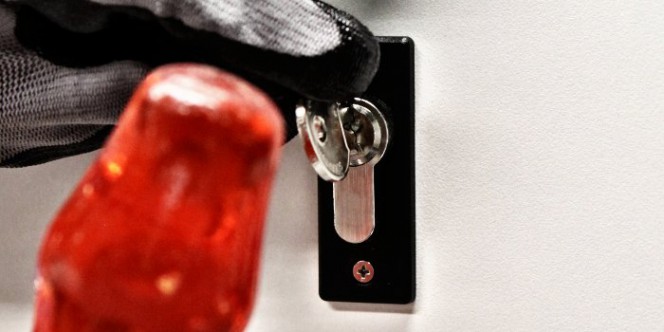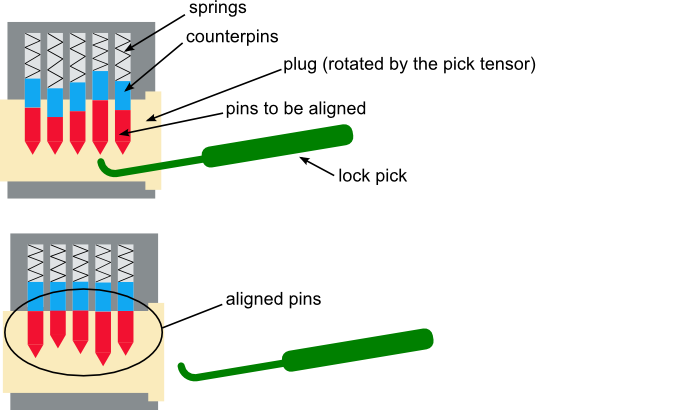You sometimes read stories in the newspaper or hear on the TV of gangs of thieves that, by using a special “magic key” or “bump key“, can open any door in just a few seconds and without leaving any trace.
Actually, things aren’t exactly like that.
Let’s start by saying that not all thefts take place by opening the door by picking the lock, that is, without breaking or forcing it. In most cases the thieves enter through a door or window left open, or they force a door or a window, or they use other methods.
Secondly, there is no such think as a key which is able to open “all doors”, because different locks require different tools and specific skills.
As we have seen in a dedicated blog (click here to re-read the article on double bit locks), the double bitted locks of an old type can actually be opened quickly with the so-called “Bulgarian pick”, a tool that allows you to reconstruct the shape of the original key in just a few seconds, and then open the lock just as if you had the real key.
Locks with European profile cylinders can be opened using two different techniques. The most classic is that of lock picking where certain tools are used, just as can see in movies when hairpins are used, for example, as picks to align the pistons. However, the reality is quite different from that seen in the movies, in which just a paperclip is enough to open a lock in less than no time. In practice it is not a child’s play, but a complex procedure which, in order to be completed, requires training and ad hoc tools.
The second, more recent, technique, is that of key bumping, using a special key, the so-called “bump key” which is also known as a “magic key”. However, even in this case, there is certainly no single key which can open “all the locks “. On the contrary, every make and model needs its own specially prepared key.
The “bump key” is inserted in the cylinder, turned as far as possible, and then hit with a lightweight hammer, so that the teeth (or recesses) of the key transfer the impact force on to the pins, which as a result jump backwards. With a certain amount of practice, the pins can be positioned at a certain point beyond the opening line, and at that point the key can be turned and the lock opened by a throw. The procedure is repeated for the other throws.
Precisely because of the principle on which the key bumping is based, it does not work on locks with gorges, such as double bitted locks, but it does work on all types of cylinders with pistons, whether they are European profiles or not, on an armoured door or not, with traditional or flat keys, with security escutcheons (commonly known as “defenders”) or without. Unless the cylinders have been specifically designed and manufactured to prevent this phenomenon. There are actually anti-bumping cylinders where, that is, under the action of the “bump key”, the pins do not retreat all at once, for example because they are placed on different axes.

The strong points of the bumping method are its simplicity and the speed of execution, and the fact that it leaves no traces of the burglary. Its critical point is that, in order to succeed, its needs a key expressly manufactured for the specific model of cylinder to be opened. Bitting a key of this type is not within the skills of every thief. It is necessary to start from a blank key and perform a particular bitting (combination of heights of the teeth or depths of the recesses on the key). This requires:
- professional bitting machines
- a blank key dedicated to model of cylinder in question (for keys with controlled key-cutting profiles these are not so easy to obtain)
- prior knowledge of the specifications of the cylinder model to be attacked in this way.
A simple and inexpensive countermeasure to prevent bumping is therefore simply to hide the cylinder brand, for example by installing on the outside of the cylinder a security escutcheon of a different brand, to make it more difficult to identify the true cylinder model.
If the exact model of the lock is not known, one must proceed by trial and error, trying various bump keys and thus losing the main advantage of the key bumping method, which is the speed, given the large number of brands and models of cylinders which are available on the market and therefore the large number of bump keys to be tried.
At least from this point of view we can rest assured: there are no such things as “magic keys” and one does not need to be a magician to be sure. With proper information and good protection systems we can greatly reduce the risk of unwanted visitors.


